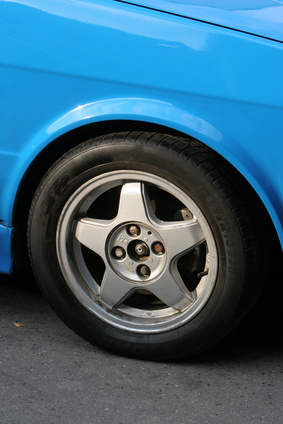Driving a car today is more hazardous then ever before. There is a record number of vehicles on our nation's highways and with that a record number of driving hazards to look out for. These hazards range from weather, safety recall issues with certain vehicles, bad roads, inexperienced drivers and much more. For the most part, you have no control over these hazards. However, there is one thing you can take control of before you leave your driveway--your tires. Most people are aware that driving with under-inflated tires is dangerous and caused unnecessary wear on your tires. But overinflated tires can be just as dangerous and cause as much wear and tear on your tires. Be sure to properly inflate your tires to their recommended pressure and inspect them regularly.

The proper amount of inflation for your cars tires (if it still has original tires) will be located on a sticker along the edge of the driver's-side door. If you have after-market tires, the correct pressure for those tires should be along the edge of the tire itself. Your cars driver's manual will also have tire pressure information.

Over-inflating your tires as little as 6psi can lead to excess damage when driving over uneven sections of road and/or potholes. When the tire is overinflated, it cannot compress and spread impact over its entire surface. This will also lead to a rougher ride, as the tire cannot cushion the weight of the car as well.

Overinflation will also cause the tire to bulge out along the center of the treads. This will result in a decrease in traction and stopping distance, since less of the tire is contacting the driving surface.

When tires are overinflated, they will wear unevenly. This will cause more stress on the tire itself, which can lead to leaks and blowouts.
